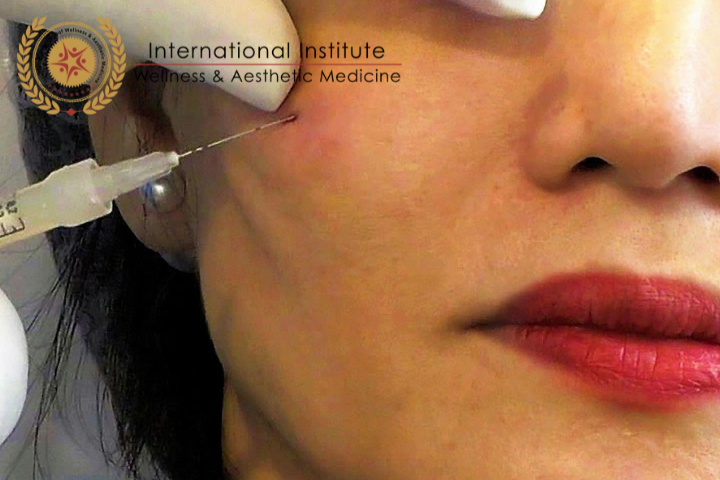About Skin Needling
In a recent article, we elaborated upon the latest cosmetic evolutions in the last decade (Read our article on Top Cosmetic Evolutions Of The Last Decade)
In today's article, we will help educate you further about skin needling as a procedure and how it should be safely carried out.
About skin needling
Skin needling is a procedure that involves puncturing the dermis (superficial layer of the skin) multiple times with tiny needles attached to a cylindrical roller. Micropunctures are created using microneedles which produce a controlled skin injury without damaging the epidermis. These micro-injuries lead to minimal superficial bleeding and set up a wound healing cascade with the release of various growth factors such as platelet-derived growth factor (PDGF), transforming growth factor-alpha and beta (TGF-α and TGF-β), connective tissue activating protein, connective tissue growth factor, and fibroblast growth factor (FGF). The needles also break down the old hardened scar strands and allow them to revascularize. Neovascularization and Neocollagenesis are initiated by the migration and proliferation of fibroblasts and the intercellular matrix. A fibronectin matrix then forms after five days of injury that determines collagen deposition, resulting in skin tightening persisting for around 5–7 years in the form of collagen.
Skin needling procedure
A trained Aesthetic practitioner should perform the skin needling cosmetic procedure with a sound understanding of adipose tissue's overall physiology and anatomy.
The treatment area is cleaned first, and then a topical or local anesthetic agent is used to minimize the discomfort. An ink 'tattoo grid' is drawn on the treatment area to guide the delivery of injections. The marks are then removed with an alcohol-soaked swab after the cosmetic procedure is over.
After preparation of the area, the skin is stretched with one hand, and the cylindrical roller with tiny needles is rolled over perpendicularly, each in the horizontal, vertical, and oblique directions with the other hand to induce microscopic injuries to the skin. The treatment endpoint is identified by uniform pin-point bleeding, which is easily controllable.
The treatment area is soaked with saline or ice packs to comfort the patient post-procedure. After that, the patient is advised to use sunscreen regularly and follow sun-protective measures. The procedure is well-tolerated by the patients, and there are usually no post-treatment sequelae except slight swelling and redness that generally last up to 2–3 days. There is no downtime, and the patient can resume daily work the very next day. Multiple treatment sessions are performed at around 3–8 week intervals to achieve the desired effect on the skin. However, the final results cannot be seen immediately because new collagen keeps regenerating for approximately 3–6 months after the treatment has ceased.
Targeted areas for skin needling
Skin needling is most often used on the face to treat-
-
Acne scars
-
Age spots (also called "sun spots")
-
Fine lines and wrinkles
-
Large pores
-
Other types of scars
-
Reduced skin elasticity
-
Uneven skin tone
-
Stretch marks in other areas of the body
About IIWAM training in skin needling
It is prudent that all Aesthetic practitioners must undergo proper training in Aesthetic Medicine. The practitioner must balance between benefits & risks of the Aesthetic procedure, and steps to mitigate complications if it occurs. At IIWAM, we call it, understanding the procedure, the product, and the patient, and our trainers pay utmost attention to teaching the following subject of skin needling treatments under our trusted online international cosmetology course.
-
What is the anatomy of the skin?
-
How to select the best device for skin needling?
-
What are the various methods & techniques for skin needling?
-
What are the various complications of skin needling?
-
How to avoid various complications of skin needling?
-
How to treat various complications of skin needling?
Apply for the best online aesthetic courses from IIWAM today.
About IIWAM
International Institute of Wellness & Aesthetic Medicine (IIWAM), formerly known as Aesthetic Academy Asia (http://aestheticacademy.asia), is a One-Stop Centre of Excellence for Aesthetic Education along with Aesthetic Medical & Wellness Procedures. IIWAM provides Aesthetic Education for Medical Doctors, Dentists, Nurses, Aestheticians & Spa Owners, which is backed by a comprehensive online learning platform and a virtual library (https://www.iiwam.ac/library).
IIWAM Education Centre (https://www.iiwam.ac/education) provides International Aesthetic Certification programs and Advanced Online Aesthetic Courses for Doctors, Dentists, Nurses, Aestheticians, and Spa Owners in the field of Aesthetic Medicine. Our Institute is based in Malaysia and has international students from the Philippines, Myanmar, Cambodia, India, Indonesia, and other countries. With our insignia of "Be Certified, Be Recognized," we develop knowledgeable, skilled, and confident Aesthetic practitioners of international repute. Our Aesthetic training focuses on teaching the principles of Aesthetic procedures before venturing into Aesthetic clinical skills. IIWAM training Programs are a combination of Onsite Training, LIVE Online Webinars, and Online Learning. IIWAM is the first Institute in the World to have its Programs assured by City & Guilds of London and certified by European International University. IIWAM is also a registered CPD Training provider with CPD Standards Office in the UK and by CPD Malaysian Medical Association.
In addition, IIWAM Aesthetic & Wellness Centre (https://www.iiwam.ac/wellness) provides scientifically based and clinically proven Aesthetic & Wellness procedures, that are safe, effective & affordable. With an insignia of "For All Your Aesthetic Needs," your treatment programs are customized to suit your needs by our Board-Certified Doctors & Surgeons.
Visit https://www.iiwam.ac for more details.

